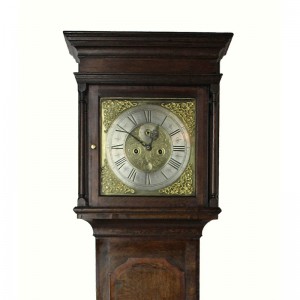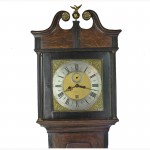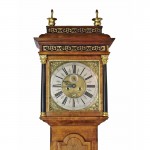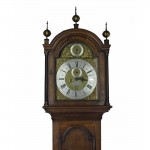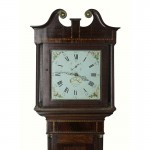James Burroughs Rochdale longcase clock
€18,900.00
Product Description
James Burroughs Rochdale longcase clock
Lancashire was one of the great clock making areas outside London: The James Burroughs Rochdale longcase clock is an unusually complete example of an early Lancashire longcase clock. The brief entry in the Brian Loomes Watchmakers and Clockmakers of the World Directory, tells that James Burroughs worked in Rochdale, was married in 1703 and died in 1721.
Rochdale was a different place in the early 1700s. Celia Fiennes, writing about 1700, “I went to Rochdale, four miles; a pretty neat town, built all of stone. Here I went to an acquaintance’s house (Mr. Taylor) and was civilly entertained. Here is a good large meetingplace well filled; these parts religion does better flourish than in places where they have better advantages.” Daniel Defoe about 1724 described Rochdale as “a good market town, and of late much improved in the woollen manufacture, as are also the villages in its neighbourhood.” It is likely that the proceeds of the improvement described by Defoe were used to purchase domestic items such as this clock. Click Here for a short history of Rochdale.
The dial shows some interesting features that allow quite accurate dating: Within the chapter ring, the central zone has been engraved with flowing designs rather than matted with a fine matting punch as was usual in London clocks at that time. The ringed winding holes and date aperture also date the dial to early 1700s.
The movement is obviously not the product of a London apprenticed clockmaker: Although it uses finned movement pillars that date it to early 1700s, the movement plates are unusually tall. There is an inside count wheel striking system
The corner spandrels are of an unusual early type, not included in H Cescinsky and M R Webster’s English Domestic Clocks (1913), However they do appear in the 1985 Brian Loomes book, Grandfather Clocks and their Cases in which they are described as Type 11; 1725/40 Twisted knop (uncommon) The spandrels are undoubtedly original to the clock so it seems that this spandrel type was introduced a little earlier than Loomes had suggested in 1985.
The oak case is embellished by applying cross- bands of a reddish wood to the edges. Although the cross-band looks at first like mahogany is actually European Walnut stained a red colour.
James Burroughs Rochdale longcase clock

